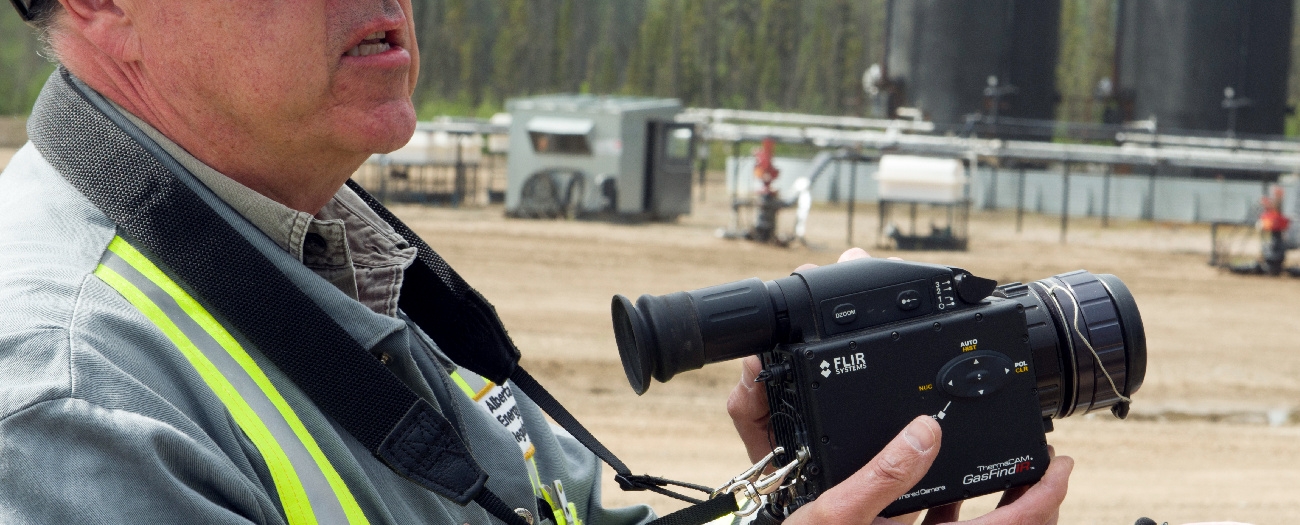FLIR cameras make invisible gas leaks visible
Alberta - September 11, 2016FLIR GasFindIR infrared cameras, which use thermal technology to trace and visualize volatile gases, have been used by the AER since 2007 to help detect oil and gas field fugitive emissions. FLIR cameras make potentially hazardous gases–otherwise invisible to the naked eye–visible.
Here are five things to know about FLIR cameras:
- A watchful eye. FLIR cameras detect 19 hydrocarbons and reveal everything from minor leaks to large vents. Not only does this improve public safety, it also ensures that industry operators meet regulatory requirements.
- Not routine. The cameras are used when the AER responds to an incident as well as during “compliance sweeps,” which are targeted inspections in a specific geographic area. They are also available by request from any of the nine AER field centres located across Alberta.
- Joining forces. FLIR cameras are often used in coordination with air monitoring units (AMUs) to detect sour gas (gas containing hydrogen sulphide [H2S]). AMUs analyze H2S concentrations, which can be found in the leaks and vents detected by FLIR cameras at facilities. Supporting each other’s capabilities expands the scope of regulatory monitoring.
- Chilling out. In the past, infrared cameras used liquid nitrogen (−196 degrees Celsius) to cool down the infrared detector integrated in the system. Today, FLIR cameras maintain this internal operating temperature by using a pressurized helium coolant—similar to what’s found in MRI machines—to keep the cameras cool and functioning.
- Evolving industry. As energy development continues in Alberta, it is essential to protect the environment and the public. This is done by continuously improving regulatory requirements and by using advanced technology, such as FLIR cameras, to comprehensively investigate incidents and mitigate potential problems.
Ashley Orzel, Writer


